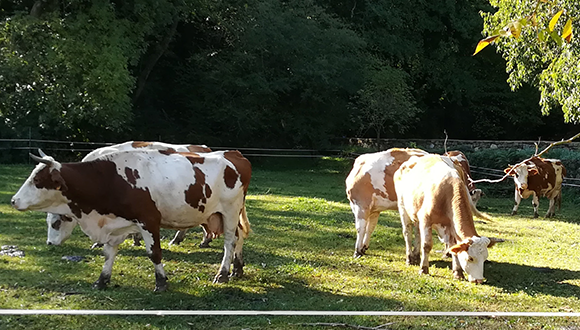The European LIFE Polyfarming project, coordinated by CREAF, is included as an inspiring model in the recently published manual of good practices ‘Sustainable management of mountain pastures‘ promoted by Euromontana.
The document, which has been elaborated as part of the EU funded LIFE OREKA MENDIAN project, gathers 31 examples of innovative projects in 18 different countries that preserve grasslands in mountainous areas of Europe. Polyfarming stands out as a regenerative agri-food model that works to increase soil fertility and biodiversity in Mediterranean mountain areas and in which grassland plays a fundamental role in livestock feeding.
The manual aims to inspire local, regional, and national actors involved in mountain management and rural development to implement models that increase grassland biodiversity and address the climate change negative impact in these areas, among other issues.
Grasslands provide essential ecosystem services, such as food production, atmospheric carbon storage in the soil, and cultural and recreational value; and it represents one of the most widespread habitats in mountain areas where diverse species coexist. However, climate change and overexploitation of these areas endanger their conservation. To address these problems, the manual aims to inspire local, regional, and national actors involved in mountain management and rural development to implement models that increase grassland biodiversity and address the climate change negative impact in these areas, among other issues. In addition, Euromontana has used the key lessons from the manual to define a set of policy recommendations in a study on the state of mountain grasslands in Europe. This study is also conducted in the frame of the LIFE OREKA MENDIAN project and it will be published throughout 2021.
The manual is already available for free download from the project website in English and French; and it will soon be available in Spanish. The LIFE OREKA MENDIAN’s partners are currently promoting it through its relevant organizations and initiatives in the rural development and mountain management field, including Euromontana’s members from 15 European countries. The manual will also be presented in congresses related to pastoral practices, such as the ‘UMT Pastoral Forum’ on 11 May 2021.

“Being part of this manual implies an important recognition of our work and an opportunity to promote it on a European scale”
MARC GRÀCIA, a CREAF researcher and coordinator of the Polyfarming project.
Marc Gràcia also highlights that this guide is a clear sign that there is a great movement to change the grassland management model towards a more sustainable one.
A key resource
Polyfarming is carried out at the Planeses farm (Girona); there, one can see extensive areas covered with grass where cows, chickens, and rabbits graze every day on a different pasture plot. “We work on a plant-animal relationship that favours both the growth of the pasture and the nutritional quality of the livestock. This basic principle, adapted to each specific situation, could be implemented in any European area”, says Marc Gràcia.

Having a quality pasture also implies better water use since the soil has a greater capacity for infiltration and water retention. In addition, fertile soil, with a large amount of organic matter, can store more atmospheric carbon, thus contributing to mitigating climate change.







